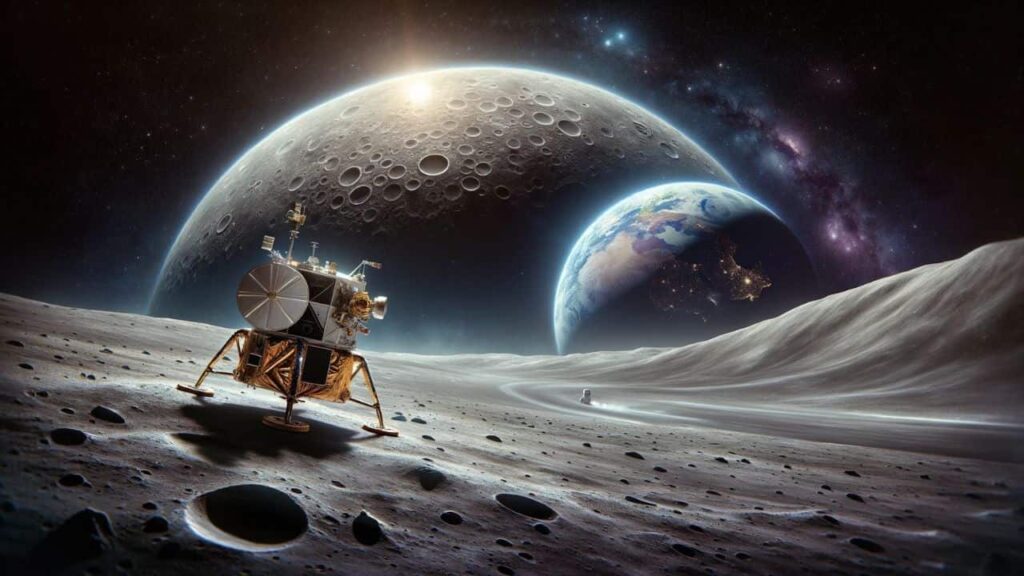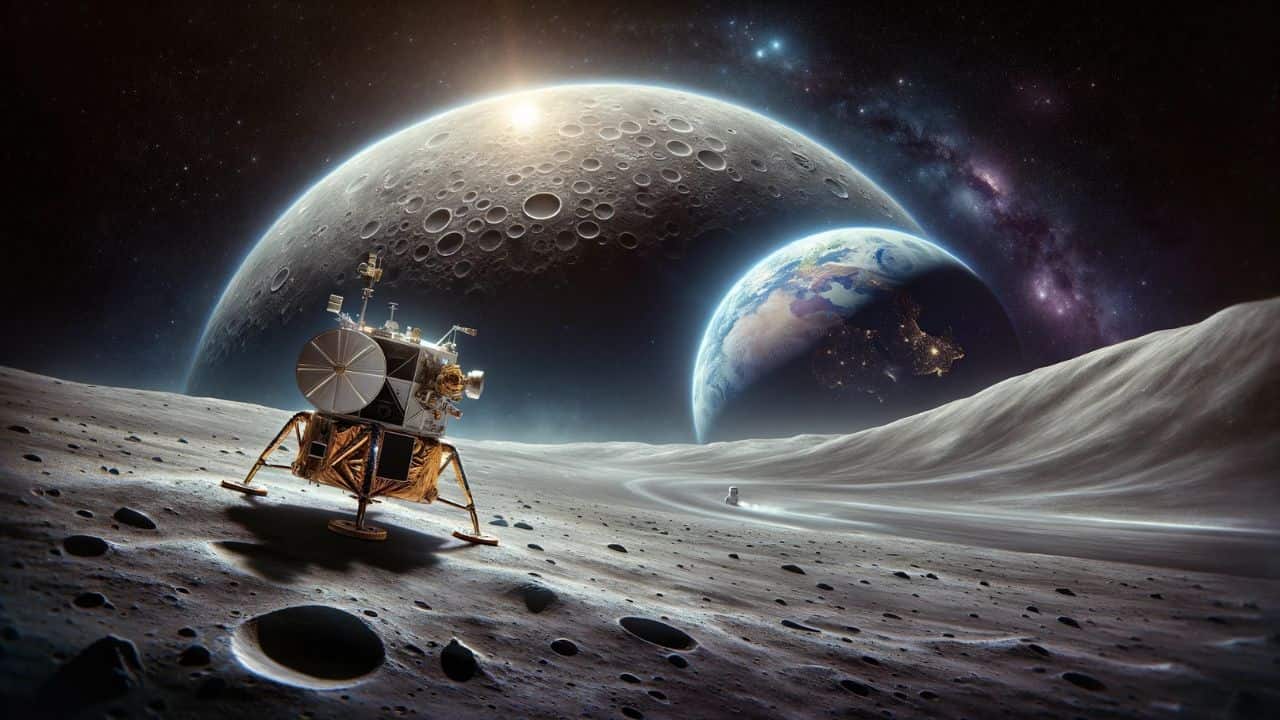Intuitive Machines, Odysseus Moon Landing, Private Lunar Mission, NASA Commercial Lunar Payload, Artemis 3, SpaceX Human Landing, Malapert A Crater, Lunar Exploration, Space Technology, NASA+ Live Stream, IM-1 mission’s
Intuitive Machines Odysseus Moon Landing- Join Texas-based Intuitive Machines in a historic endeavor as the Odysseus lander attempts the first privately-led soft landing on the Moon’s South Pole. Discover the significance of this mission within NASA’s Commercial Lunar Payload Services initiative, its challenges, and its role in shaping future lunar exploration. Watch live as we enter a new era of space exploration.

Pioneering Private Lunar Exploration
In a monumental leap for both space exploration and private industry, Texas-based Intuitive Machines is set to make history with its Odysseus lander. This ambitious attempt to achieve the first privately-led soft landing on the Moon is scheduled for 4 AM on Friday, February 22. The target for this groundbreaking mission is the area near Malapert A crater, located in the Moon’s South Pole region, an area of significant scientific interest and not far from where ISRO’s Chandrayaan-3 lander has made its mark.
Watching History Unfold Live
For space enthusiasts and the general public alike, the anticipation surrounding Odysseus’s lunar attempt is palpable. Thanks to modern technology, this momentous event will be broadcast live across several platforms. Viewers can tune in through NASA+ (the agency’s new streaming service), NASA Television, the NASA app, and its official website, ensuring wide accessibility to witness this potential historical achievement in real time.
The Journey to the Moon: A Competitive Field
The American IM-1 (Odysseus) mission follows in the footsteps of previous private attempts to reach the lunar surface. Notably, the Israeli Beresheet mission in 2019 and Japan’s Hakuto in 2023, both aimed for the Moon but fell short of their goals due to various complications. Most recently, the Peregrine mission by Houston-based Astrobiotic encountered a critical propellant leak shortly after launch, leading to its premature end. These efforts underscore the challenges and high stakes involved in lunar exploration, setting the stage for Odysseus’s attempt at making history.
Mission Goals and Challenges
Should Odysseus successfully touch down on the lunar surface, its mission is expected to last approximately seven days—until the harsh lunar night envelopes the Moon. The onset of lunar nightfall will render Odysseus’s solar panels incapable of powering the lander, likely causing most onboard instruments to succumb to the freezing conditions near the lunar south pole. This limited operational window highlights the mission’s high-risk, high-reward nature, as well as the technical challenges of operating in the Moon’s extreme environment.
Advancing Lunar Science and Exploration
This mission is a critical component of NASA’s Commercial Lunar Payload Services (CLPS) initiative, which collaborates with numerous U.S. companies to transport science and technology payloads to the lunar surface. The insights garnered from the IM-1 mission will be invaluable for understanding the lunar surface environment, particularly in preparation for SpaceX’s Human Landing System to deliver Artemis 3 astronauts to the Moon. This marks a significant step towards returning humans to the lunar surface for the first time since Apollo 17 in 1972, furthering our knowledge and capabilities in space exploration.
See first Video of the Moon
Conclusion
Intuitive Machines’ Odysseus lander represents not only a significant milestone for private space exploration but also a testament to human ingenuity and the relentless pursuit of knowledge. As we stand on the brink of witnessing this historic attempt, the mission underscores the collaborative spirit between private industry and public space agencies, driving forward the boundaries of what is possible in our quest to explore the cosmos.
Other Links-
